OCZ Vertex 4 Review (256GB, 512GB)
by Anand Lal Shimpi on April 4, 2012 9:00 AM ESTAnandTech Storage Bench 2011 - Light Workload
Our new light workload actually has more write operations than read operations. The split is as follows: 372,630 reads and 459,709 writes. The relatively close read/write ratio does better mimic a typical light workload (although even lighter workloads would be far more read centric).
The I/O breakdown is similar to the heavy workload at small IOs, however you'll notice that there are far fewer large IO transfers:
| AnandTech Storage Bench 2011 - Light Workload IO Breakdown | ||||
| IO Size | % of Total | |||
| 4KB | 27% | |||
| 16KB | 8% | |||
| 32KB | 6% | |||
| 64KB | 5% | |||
Our light workload is far more representative of a mainstream client workload (read heavy) and this is where the Vertex 4's sequential read performance hurts it the most. The Samsung SSD 830 ends up being considerably faster here. Once again, if we look at the breakdown of reads and writes we see why:
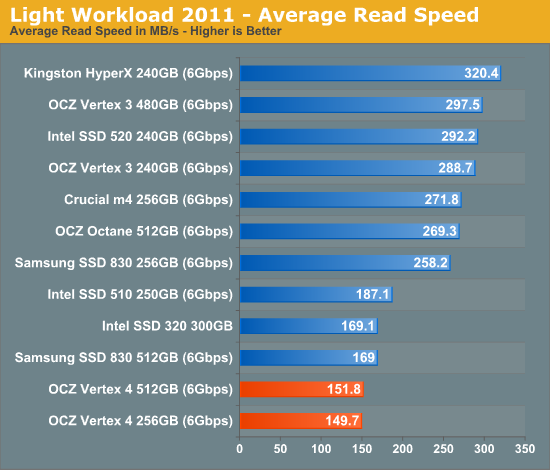
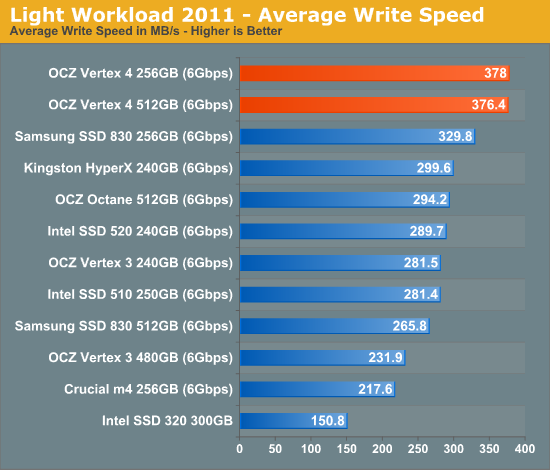
Read performance is around half of the best performers, while write speed is around 30% better. The combination results in competitive but not class-leading performance.If OCZ is able to deliver, at a minimum, Octane levels of read performance, the Vertex 4 should find itself much higher in the overall charts.
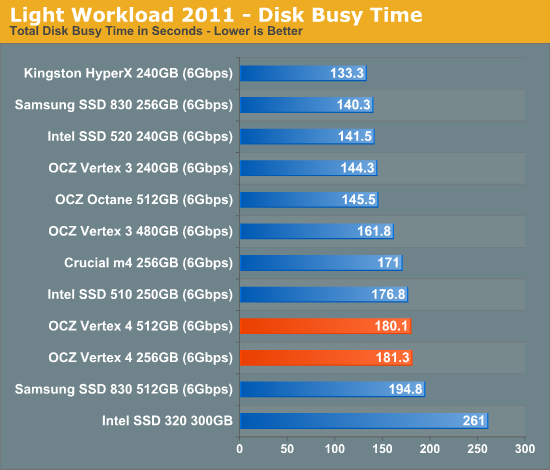
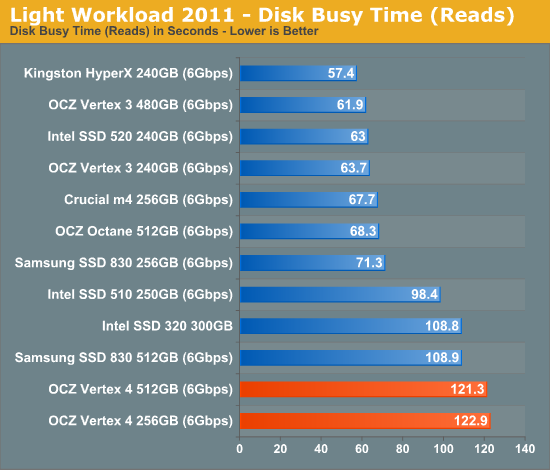



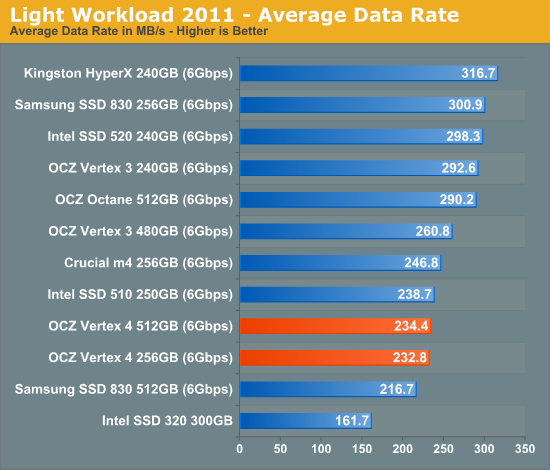








127 Comments
View All Comments
elghosto - Wednesday, April 4, 2012 - link
linux#fstrim
Per Hansson - Wednesday, April 4, 2012 - link
"monitoring port of the SSD"Please enlighten me, Google was no help...
Is it a hardware interface that allows you to see how the drive operates?
adamantinepiggy - Thursday, April 5, 2012 - link
Basically, every SSD has some sort of real-time data port that allows engineers to monitor what is going on with the SSD, even when the drive hangs or has other issues. It is used mainly for development/testing. Consider it sorta like a way to read/access the dump file when Windows BSOD's, except in this case it's on the SSD. This monitoring port gets disabled on released drive firmware and the hardware attachment leads are unattached..jonup - Wednesday, April 4, 2012 - link
Thanks for asking this! I always wanted to know that myself. I actually google it to no avail while I was reading the article.medys - Wednesday, April 4, 2012 - link
How long till we are overclocking our SSD processors :-/FunBunny2 - Wednesday, April 4, 2012 - link
Umm. How you gonna fit that water cooler inside the case?Iketh - Wednesday, April 4, 2012 - link
hahaha... NEVER!! I've yet to break a Win7 installation from overclocking, but I broke XP many times... I shudder at the thought of overclocking an SSD :)Iketh - Wednesday, April 4, 2012 - link
Although, I wonder how long until the processors in SSDs reach, say, today's single-core Atom... OR better yet, how long before the SSD controller is built into the CPU much like the memory controller, where we install more storage the same way we install ram... and then later again the nand controller and RAM controller merge, and a computer is nothing more than a SoC with some nand sitting next to it...iwod - Wednesday, April 4, 2012 - link
We finally have controller that are able to bump out MB faster then Sandforce without using some silly compression engine. Marvell also announced next Gen SSD controller as well.Again we have reached the limit of SATA 6Gbps, we will need to start thinking about SATA Express, Lower power consumption, reliability. etc...
akbo - Wednesday, April 4, 2012 - link
Though I think the high consumption might be because of the controller, the chip is huge! With thermy sticky!Wonder when a die shrink of this is possible.